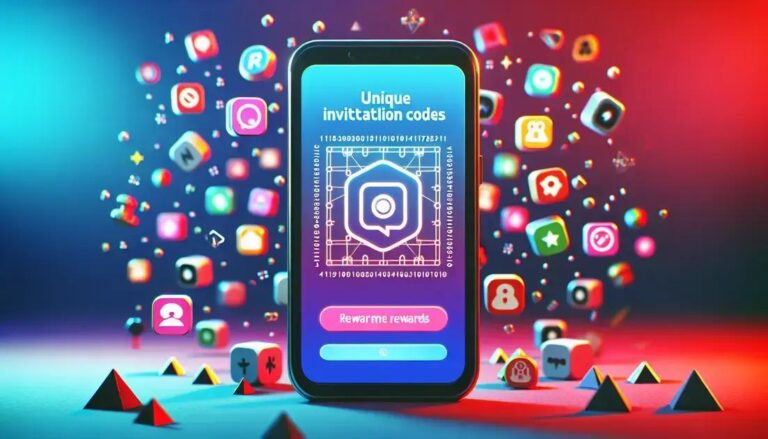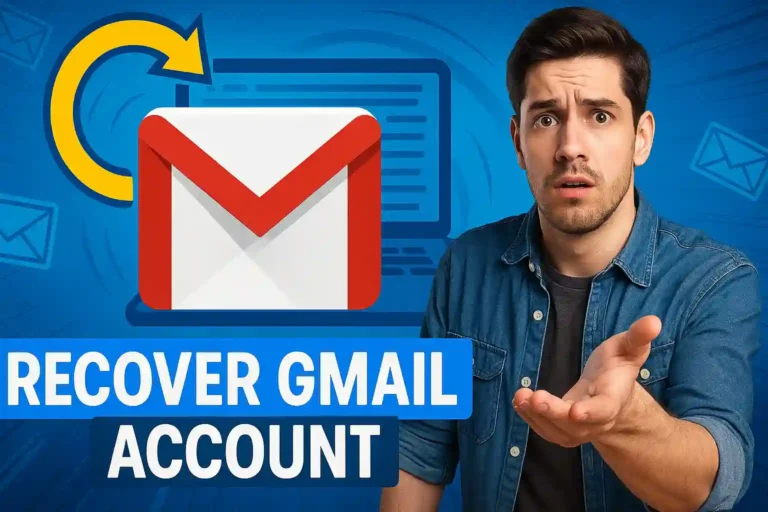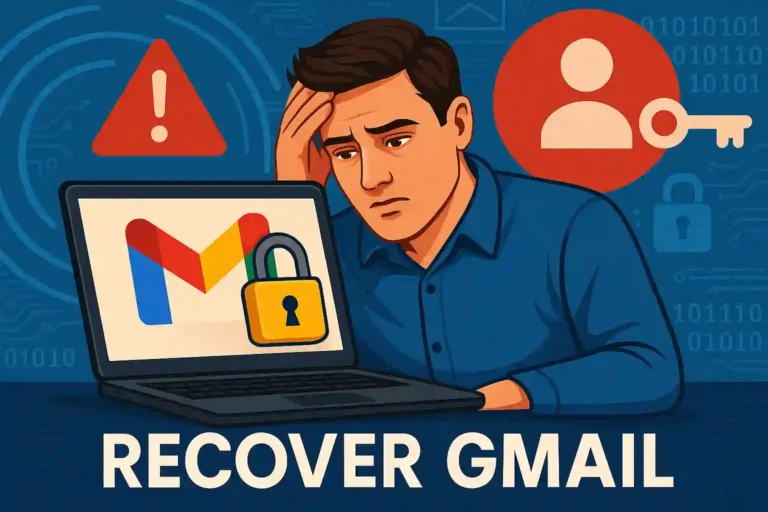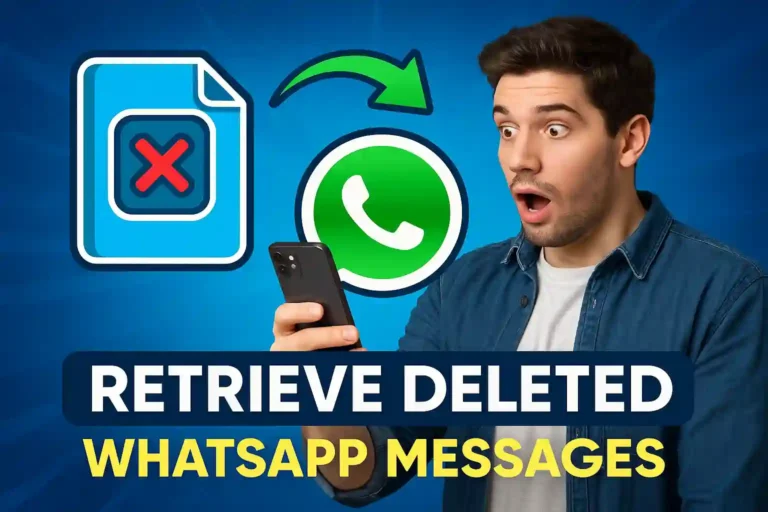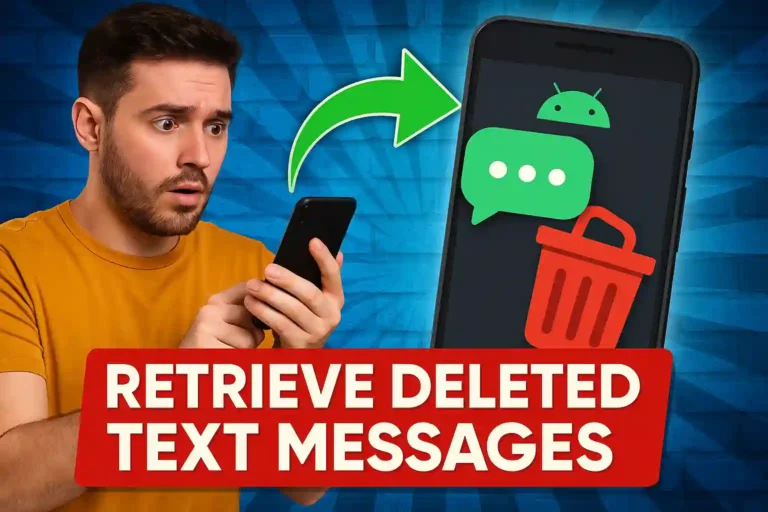Contacts Disappeared? Learn How to Sync and Restore Everything
Have you ever accidentally deleted your contact list? It’s a frustrating experience, but you’re not alone. The desire to recover contacts is something many of us have faced. Losing important numbers can feel like losing touch with the world. But, don’t worry too much – solutions are at hand!
In an age where technology is part of our everyday life, there are several ways to recover contacts. From built-in phone features to third-party apps, recovering lost data can be easier than it seems. Have you ever tried these methods before?
This article dives into the most effective ways of contact recovery. Discover what you need to know. It’s time to say goodbye to that sinking feeling when you realize important numbers have vanished. Ready to explore?
Understanding The Need To Recover Contacts
Have you ever wondered why it’s essential to recover contacts efficiently? Our digital lives depend heavily on keeping a well-maintained contact list, but mishaps happen. Understanding why it’s crucial to recover these contacts can prepare you for such events.
Let’s explore a few scenarios. One common instance is accidental deletion, where valuable contacts may be lost due to human error. Another possibility is device malfunctions or software updates that might wipe out your contact data unexpectedly.
Why Contacts Matter
Contacts are more than just phone numbers; they are your connection to colleagues, friends, family, and various services. Losing them can disrupt your personal and professional life significantly, making the ability to recover them quickly a high priority.
Moreover, consider the impact on your productivity. Without immediate access to contacts, scheduling meetings or coordinating with others becomes cumbersome, especially if those contacts are not stored elsewhere.
Recognize Warning Signs
Understanding the warning signs of potential data loss can be the first step in prevention. Always be cautious during activities such as installing new software or system updates, as these might pose a risk to your stored data.
Top Methods For Contact Recovery
When it comes to contact recovery, knowing the right methods is key to swiftly restoring lost information. Here, we’ll explore some top approaches that you can use to retrieve your contacts effectively and efficiently.
Syncing with Cloud Services
One of the most reliable methods to recover lost contacts is through cloud syncing services. Platforms like Google Contacts and iCloud automatically back up your data, allowing you to restore them quickly. To do this, simply log into your cloud account and check your contact lists for any missing entries.
Using Phone’s Backup Features
Modern smartphones often come with built-in backup options. For example, Android devices have Google Backup, while iPhones utilize iCloud backups. Ensure your device’s backup feature is enabled to routinely capture contact information.
Third-party Recovery Apps
If standard methods don’t work, several apps specialize in contact recovery. Apps like Dr.Fone and EaseUS MobiSaver offer options to scan your device for deleted contacts and restore them.
Always check the app reviews and compatibility with your device before proceeding to ensure a smooth recovery process without data compromise.
Contact Support
In some cases, reaching out to customer support from your service provider can be beneficial. They might have additional tools or methods to help restore your contacts. Be prepared to provide account details and any recent changes or updates you made to facilitate the recovery process.
Best Tools For Efficient Contact Recovery
In the quest to ensure efficient contact recovery, utilizing the right tools can make a significant difference. Here are some of the best tools that can aid you in recovering lost contacts with ease.
Google Contacts
This is a robust tool available for Android users. Google Contacts automatically syncs with your Google account, making it simple to restore deleted contacts within a 30-day window. Simply log in to your Google account, access Contacts, and choose the ‘Undo changes’ option to retrieve any lost information.
iCloud for iPhone Users
iCloud acts as a reliable backup service for iPhone users. By regularly syncing contacts to iCloud, users can restore their entire contact list or specific contacts. Navigate to iCloud settings on your device to begin the recovery process, ensuring a seamless restoration.
Dr.Fone
Dr.Fone is a comprehensive recovery app offering services for both Android and iOS devices. It lets you recover contacts, messages, and other data, even from severely damaged phones. Its user-friendly interface guides you through the recovery procedure with clear instructions.
EaseUS MobiSaver
EaseUS MobiSaver provides an efficient way to recover contacts from iOS devices. It’s particularly useful for retrieving data after a factory reset. Available for desktop use, this tool scans your device for any recoverable contact data that was lost.
By integrating these tools into your data management routine, you can ensure that contact recovery is not just fast but also secure, minimizing potential data loss in the future.
Tips To Prevent Future Contact Loss
Preventing future contact loss is essential to maintaining your digital connections and ensuring that you’re never caught off guard without access to important numbers. Here are some practical tips that can help safeguard your contact information.
Regular Backups
Ensure that your contacts are regularly backed up. Most smartphones allow automatic syncing with cloud services such as Google Contacts or iCloud. Go to your phone settings and enable automatic backups to keep your contact data secure.
Export Contacts to External Storage
Consider exporting your contact list to an external storage device like a USB drive or your computer. Most devices offer a simple export feature that creates a vCard or CSV file, making it easy to import your contacts elsewhere if needed.
Use Multiple Cloud Accounts
While using a primary cloud service for backups, having a secondary cloud account can offer an additional layer of protection. If one service encounters issues, your contacts are still safe in the alternate account.
Review and Clean Contacts Regularly
Periodically review your contact list to remove duplicates and outdated entries. A well-maintained contact list not only helps in retrieval but also ensures that any sync or backup processes run smoothly.
By implementing these strategies, you can significantly reduce the risk of contact loss and stay connected with ease, knowing your valuable information is well-protected.
FAQ – Frequent Questions About Recovering Contacts
What are the most common causes of contact loss?
Contact loss can occur due to accidental deletion, software updates, device malfunctions, or syncing errors.
How can I recover deleted contacts from my smartphone?
You can recover deleted contacts by using cloud backup services, such as Google Contacts or iCloud, or by using third-party recovery apps.
What tools are best for contact recovery?
Popular tools for contact recovery include Google Contacts, iCloud, Dr.Fone, and EaseUS MobiSaver.
How often should I back up my contacts?
It’s advisable to back up your contacts regularly, preferably enabling automated backups, to ensure updated records.
Can I prevent contact loss in the future?
Yes, you can prevent contact loss by maintaining regular backups, exporting contacts to external storage, and reviewing your contacts periodically.
What should I do if my contacts are not syncing?
Ensure you have an active internet connection, check sync settings, and make sure there are no account login issues with your cloud service.


